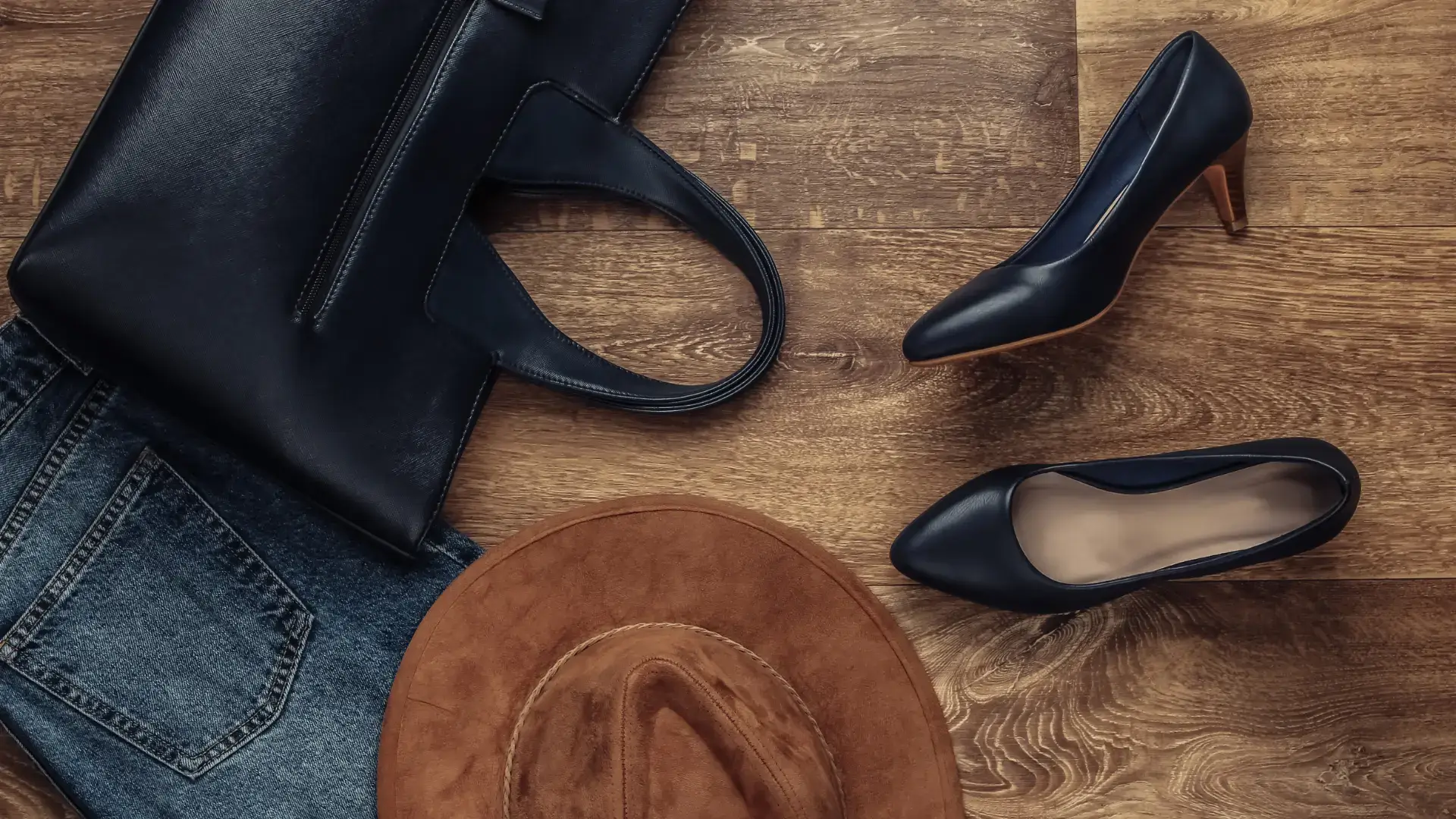Within the global economy, the fashion industry is among the most dynamic. Seasonally variable, it adjusts swiftly to changes in consumer behavior, technological advancements, and industry dynamics.
This post discusses how fashion ecommerce brands can succeed in 2024 and looks at some of the most popular marketing trends for the e-commerce fashion industry.
In this article:
- Recent Fashion Ecommerce Statistics
- Top 7 Fashion Ecommerce Industry Trends (with examples)
- Sustainability and ethical manufacturing
- Athleisure apparel/accessories
- Seasonless and genderless
- Product personalization with AI
- AR/VR fitting room experience
- BNPL payment methods
- Omnichannel marketing
- 3 Bonus Tips to Enhance Your Fashion Brand
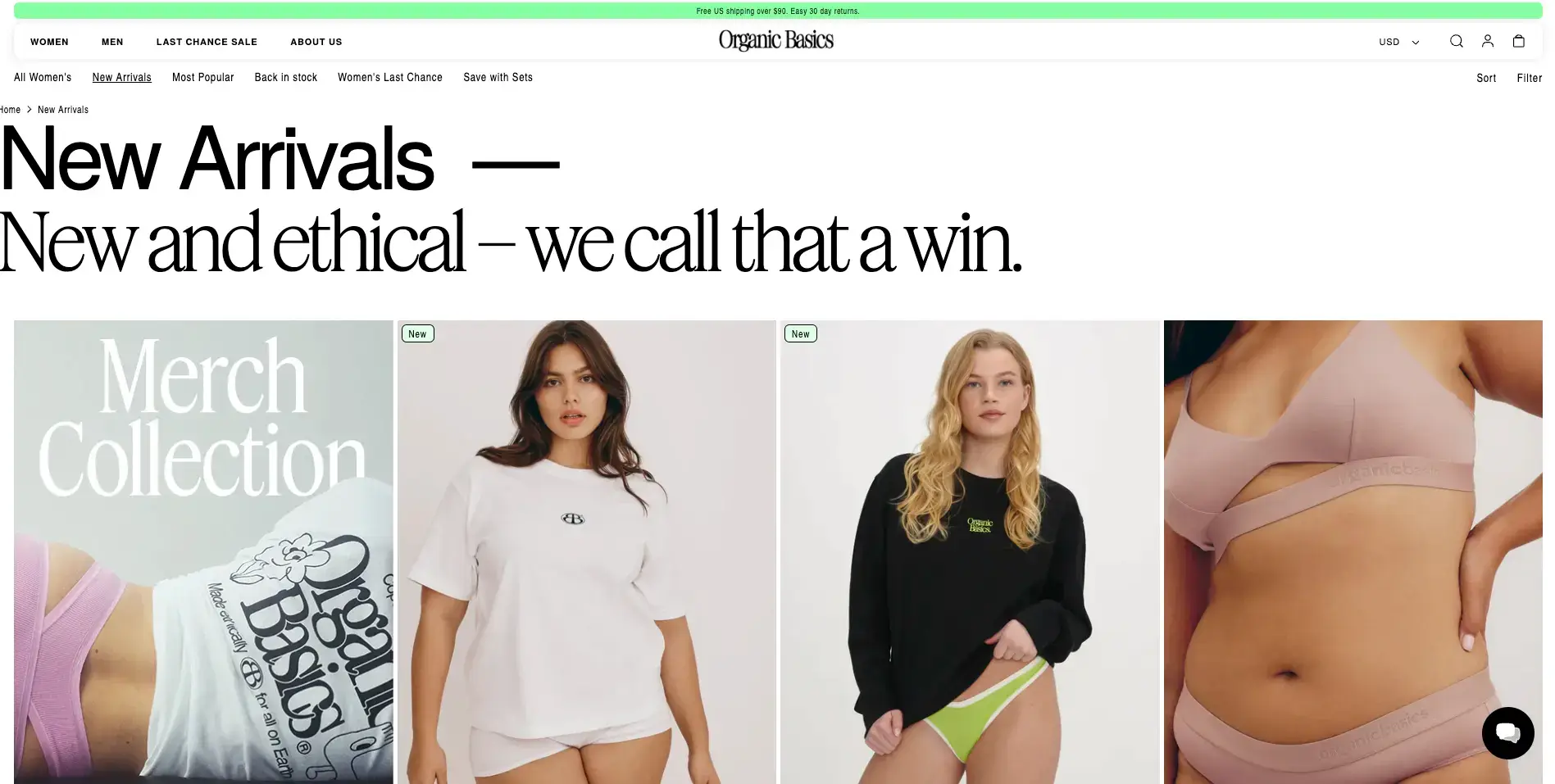
Recent Fashion Ecommerce Statistics
The fashion industry has unquestionably impacted people's lives all over the world.
With retail e-commerce sales reaching trillions of dollars globally, it is not surprising that the fashion e-commerce market is expanding annually.
Among the main fashion categories, clothing makes up most of what customers buy online. Still, footwear and accessories continue to generate significant revenue for the global online fashion market.
Top 7 Fashion Ecommerce Industry Trends (with examples)
- Sustainability and ethical manufacturing
- Athleisure apparel/accessories
- Seasonless and genderless
- Product personalization
- AR/VR fitting rooms
- BNPL payment methods
- Omnichannel marketing
1. Sustainability and ethical manufacturing
The trend of consumers drawn toward fashion ecommerce brands that practice sustainability and ethical sourcing is one of the most significant developments of this year.
Regrettably, the fast-fashion industry incurs high environmental costs, including excessive water use, hazardous chemical releases, and greenhouse gas emissions.
Since reports about underpaid garment workers and unsafe working conditions surfaced, the industry has come under fire for social injustice in the supply chain.
Vege Threads is a brand recognized by Ethical Clothing Australia. To be accredited, businesses must adhere to ECA standards for the fair treatment and compensation of garment workers.
In addition, the brand donates a portion of its profits to nonprofits as a member of 1% for the Planet. Vege Threads apparel uses organic cotton certified by GOTS and other sustainable materials.
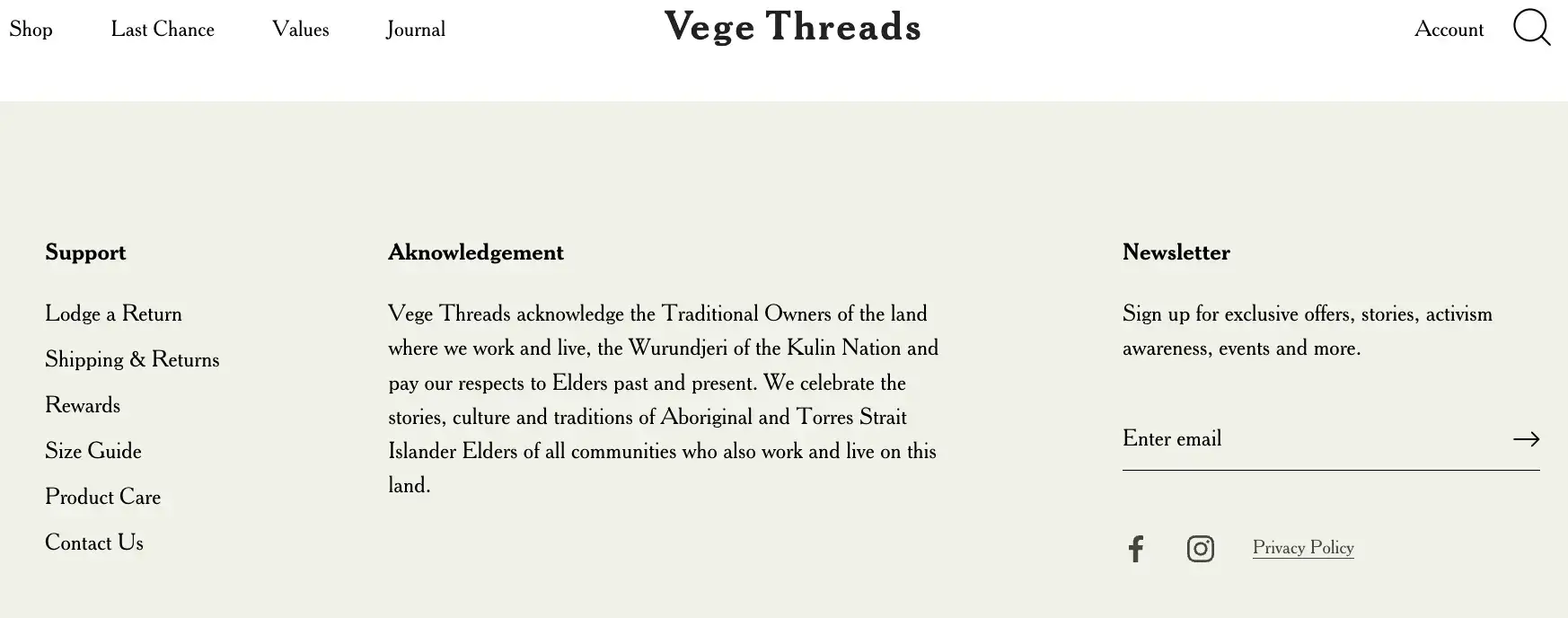
Leaders in sustainable fashion are transparent about the effects of their products.
The effects range from product passports that provide information about an item's origins to clear product descriptions that tell customers about the materials and processes used.
It means that honest online retailers will be rewarded for reducing their impact.

Dave Luba and Kalen Emsley started Tentree to use businesses to have a positive environmental impact.
They were inspired by their time spent fully submerged in Hawaii. Tentree aims to plant over a billion trees by 2030, planting ten trees for each item sold.

Therefore, fashion retailers are under increasing pressure to produce quickly enough to stay competitive while respecting the environment and their employees.
Due to the pandemic, environmental and social governance issues are receiving more attention, and investors and online shoppers increasingly demand transparency.
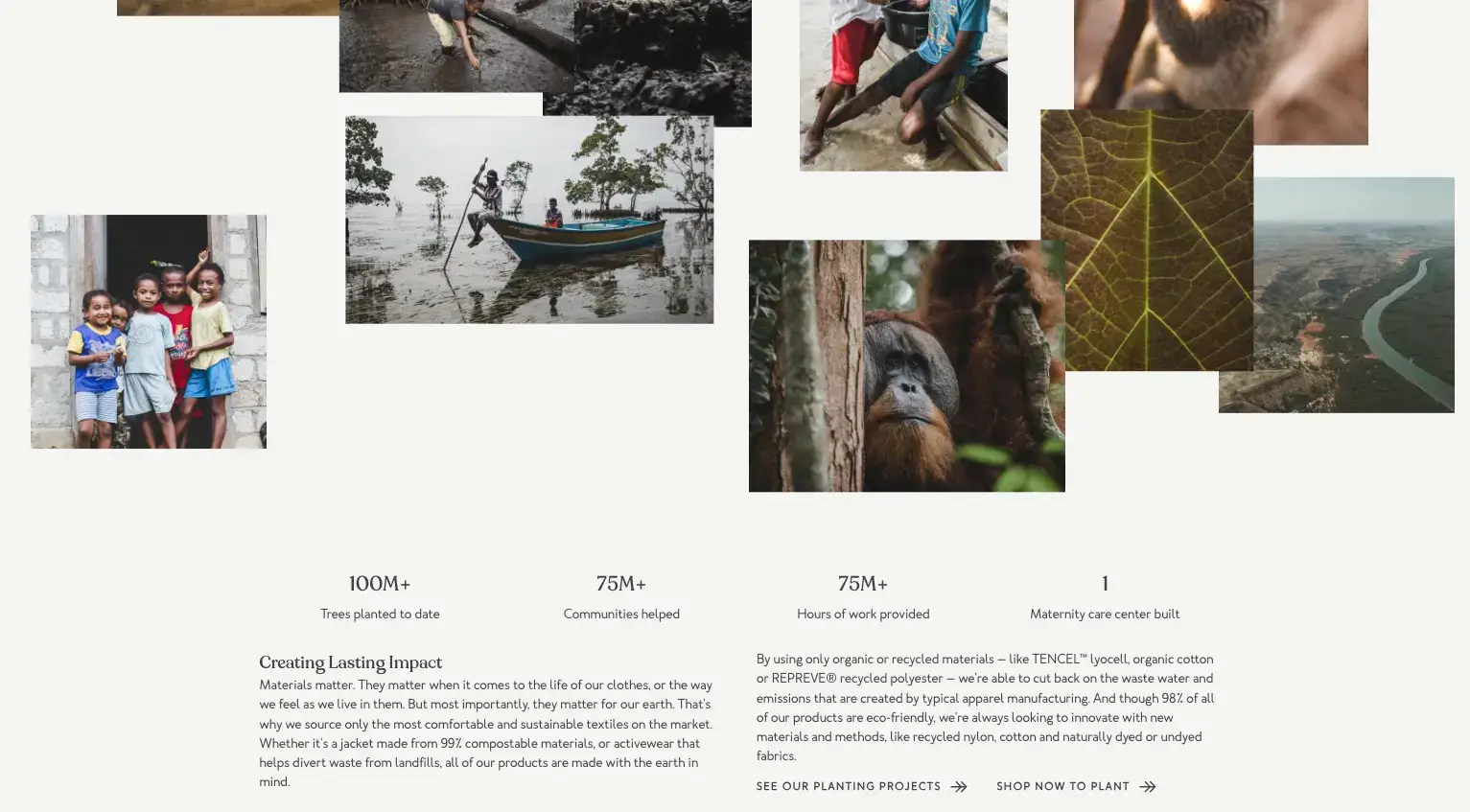
As a result, thrift and used merchandise marketing is becoming increasingly common.
Instead of buying brand-new goods, consumers can shop sustainably and economically by renting, reselling, and reusing clothing.
2. Athleisure continues to be a growing segment
It makes sense that athleisure has emerged as one of the fashion industry's fastest-growing segments, given the prevalence of consumers who continue to work from home and stay inside.
The activewear market was worth $319 billion worldwide in 2022, and by 2027, this figure is forecast to increase by roughly 40%.
Women’s activewear is one of the fastest-growing segments of the activewear market and is forecast to be worth $242.5 billion in 2027.
Given this remarkable expansion, it's hardly surprising that retailers Target and Amazon now carry athleisure lines and that online searches for the activewear brand Lululemon have increased.

According to Macro Trends, Lululemon Athletica Inc.'s revenue for the twelve months ending October 31, 2023, was $9.186B, a 23.01% increase year over year.
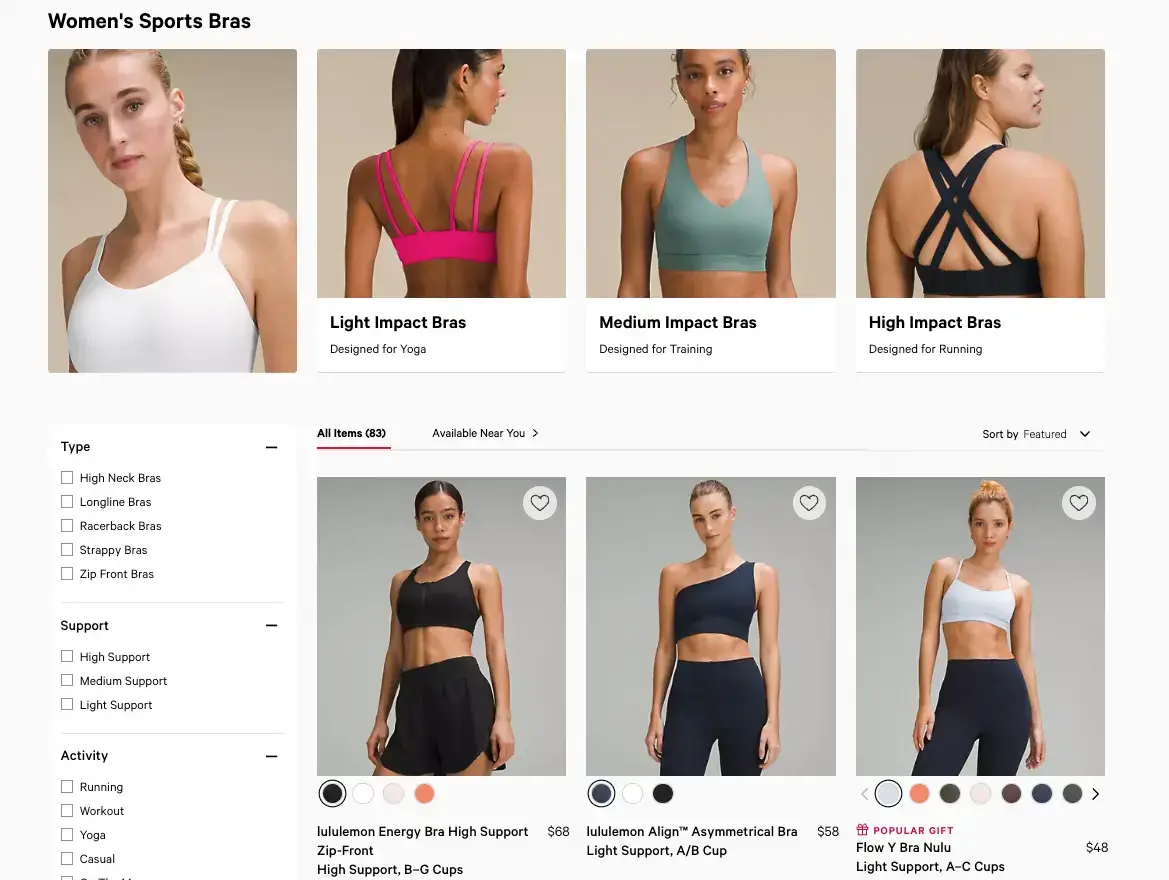
As the name implies, athleisure products appeal to customers for comfort and athletic reasons.
During the pandemic, many people embraced working out at home and outdoors, especially as gyms and fitness centers closed, increasing demand for activewear products.
3. Seasonless and genderless promote longevity
Given the growing emphasis on sustainability, one may wonder whether we genuinely need new clothing every season.
Many fashion ecommerce brands are simply doing less, in contrast to the traditional fashion machine that produces new collections for international fashion weeks and new clothing lines every season.
Here, we can see JACQ as an example.
On its About page, JACQ boldly declares that its goal is to "dismantle" the limitations imposed by gender norms on our culture. Judging by what it offers, the label is living up to its hype.
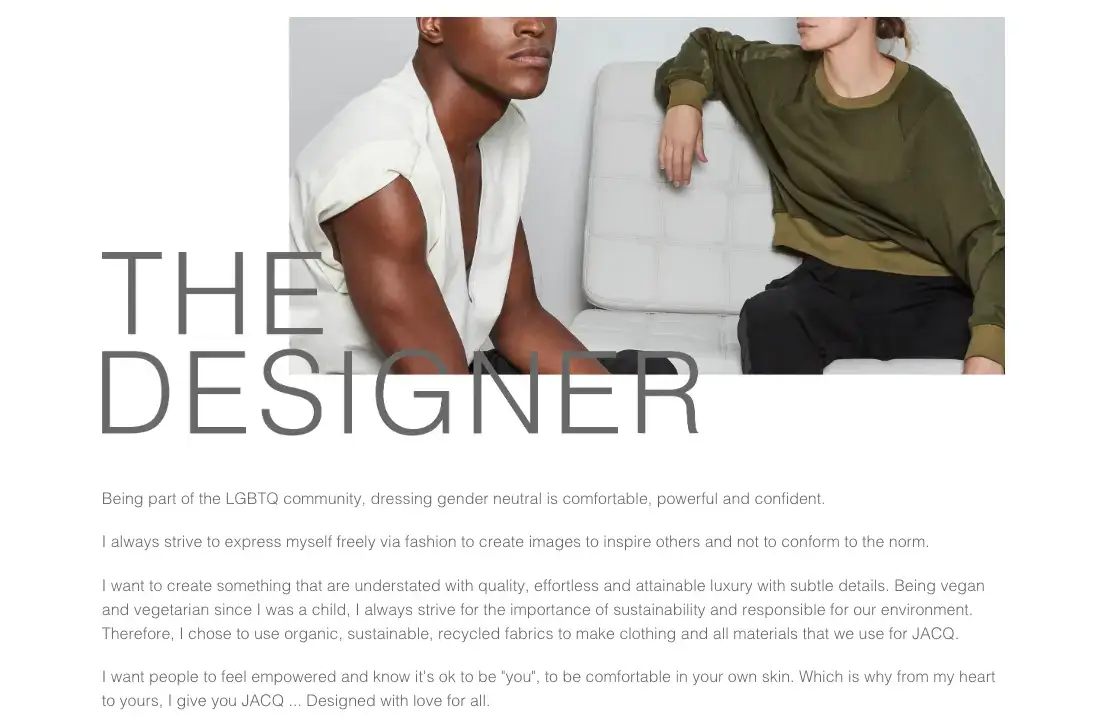
The creative director aims to create clothing for the brand's clientele rather than for a particular gender.
JACQ offers versatile styles, including jumpsuits, pullovers, blazers, pants, T-shirts, and more.
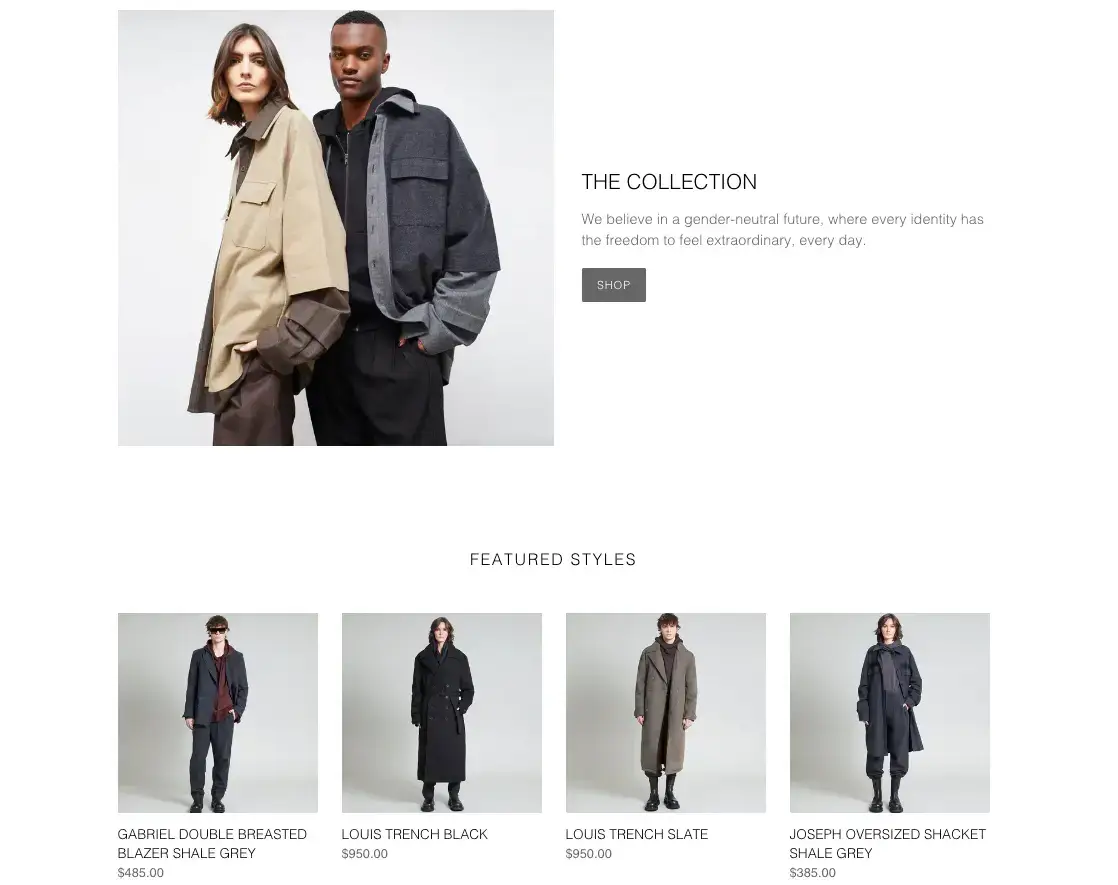
With such successful fashion brands setting the standard, many fashion retailers emphasize durability over novelty. As a result, customers can save money, save the environment, and enjoy their clothes for longer.
However, other fashion categories are gaining popularity besides seasonless. Many businesses are adopting genderless fashion to further reduce production.
The debut of unisex/nonbinary clothing lines has been an enormous step forward for the LGBTQ+ community, fostering greater diversity and inclusivity in the fashion industry.
Many fashion brands are responding by releasing genderless collections and casting models from various genders to break the barriers between masculine and feminine fashion.
4. Give personalized recommendations using AI
The convenience and ease of use of fashion ecommerce are two of its main justifications.
However, an increasing number of fashion ecommerce sites are also utilizing their capacity to personalize customer experiences and deliver what customers want quickly.
Fashion brands can offer personalized product recommendations based on a customer's past purchases and browsing history, and use situational targeting to inform them. This is made possible by artificial intelligence and consumer behavior tracking.

The top left of the product image offers the option to find a similar design.
Customers may also click on a sweater and then scroll down to see a section labeled "You May Also Like" or "Recommended for you."

5. AR/VR create virtual fitting room experiences
As retail experiences become more digital, ensuring customers are happy with everything they buy becomes more challenging.
Fortunately, a wide range of intelligent fitting technologies is helping the fashion industry meet the demands and desires of its customers.
Beyond this functionality, other technologies use augmented reality and 3D technology to show precisely how a product would appear on a customer or model.
AR and VR fitting rooms give customers a clear image of a product's size, fit, and style right from their mobile device by recognizing their contour and letting them select which clothing items to try on.
To enhance the customer experience, Adidas has added a virtual try-on function to its iOS app. This feature allows customers to select new shoe styles without entering a store.
Download the Adidas app, go to any product page for the Alphaedge shoes, point your smartphone towards your feet, and see the virtual models appear.

Thanks to the augmented-reality feature, customers can at least get a better idea of how the shoes will look on their feet before making a purchase.
However, it cannot help you determine the exact size and fit.
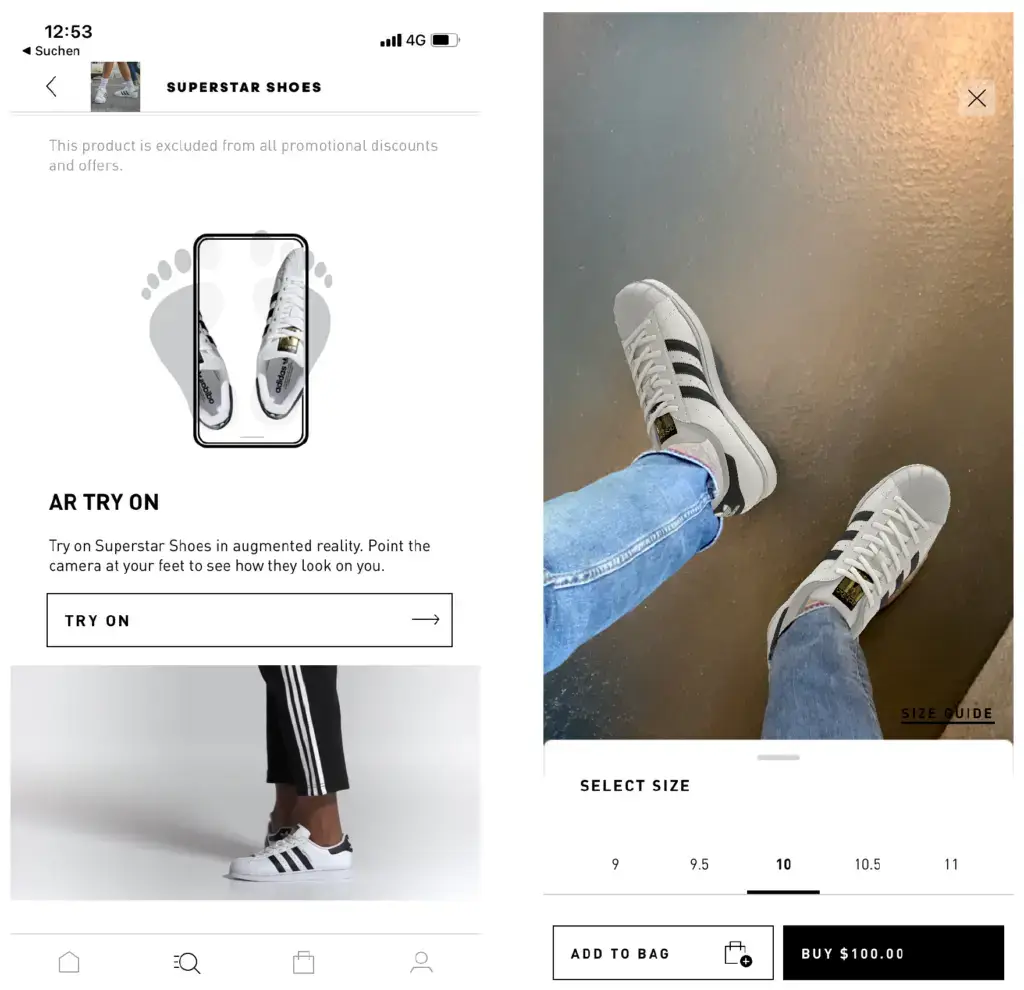
Adidas can manage customer expectations and minimize returns with this feature, though many customers say they rarely return items they order online because it's too much work.
By entering their usual sizes for other brands, answering a few short questions, or providing their precise measurements, customers can use some smart-fitting technologies to find their ideal size.
The ecommerce platform then uses data technology to compare product sizes to items the customer already owns and loves, and provides size and style recommendations to the user.
Buying anything online, especially a costly item, is always risky, but buying clothes online without trying them on in person raises even more questions.
Nevertheless, efforts are underway to reduce customer anxiety and provide an experience comparable to that of a brick-and-mortar store through augmented and virtual fitting rooms.
6. Buy now, pay later payment method
Owing to recent supply chain and inventory issues and the earlier start to holiday sales, consumers are more likely to shop in advance.
Previously, layaway plans were the only way for early-bird shoppers to reserve and pay for items gradually.
But a new payment plan called buy now, pay later (BNPL) is becoming increasingly popular.
A buy-now-pay-later plan is a loan offered to a customer at the point of sale to purchase merchandise on credit, without a credit card.
Popular options include Shop Pay Installments from Shopify, Affirm, Afterpay, Sezzle, and Klarna.
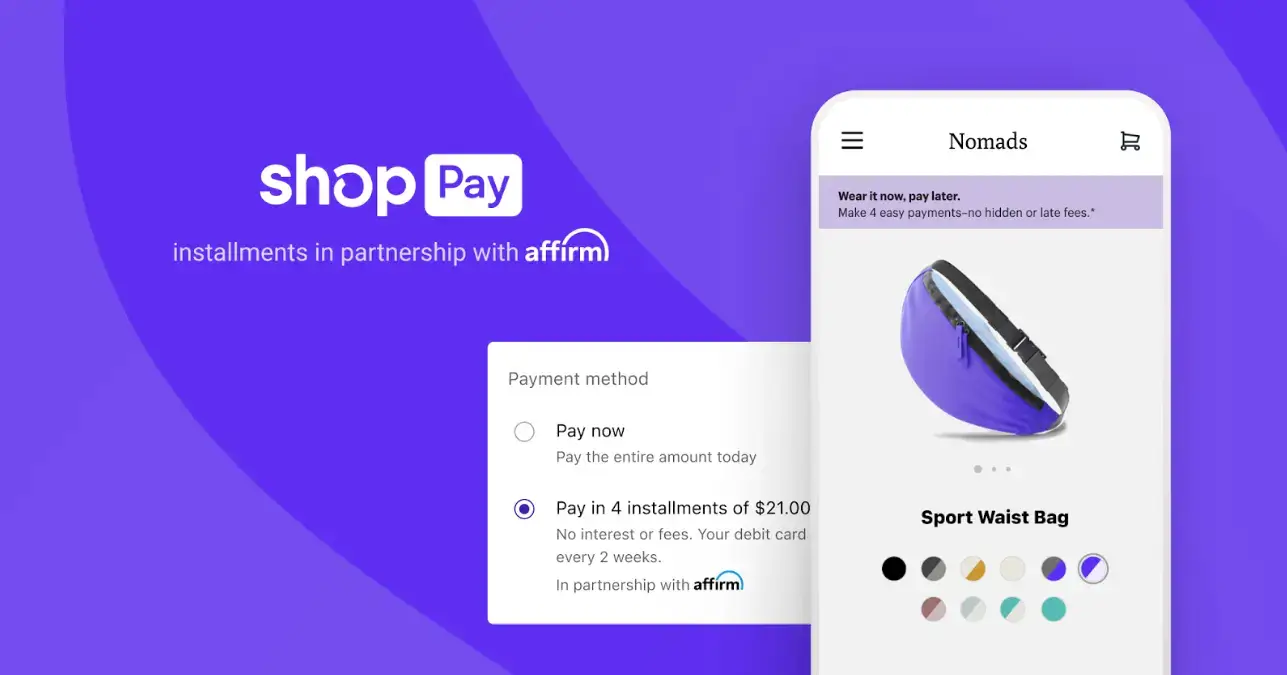
Many will release funds for a point-of-sale loan after doing an instant, soft credit check on the customer, which doesn't impact your credit score.
Depending on the company and the amount borrowed, customers have various options for repaying the loan balance.
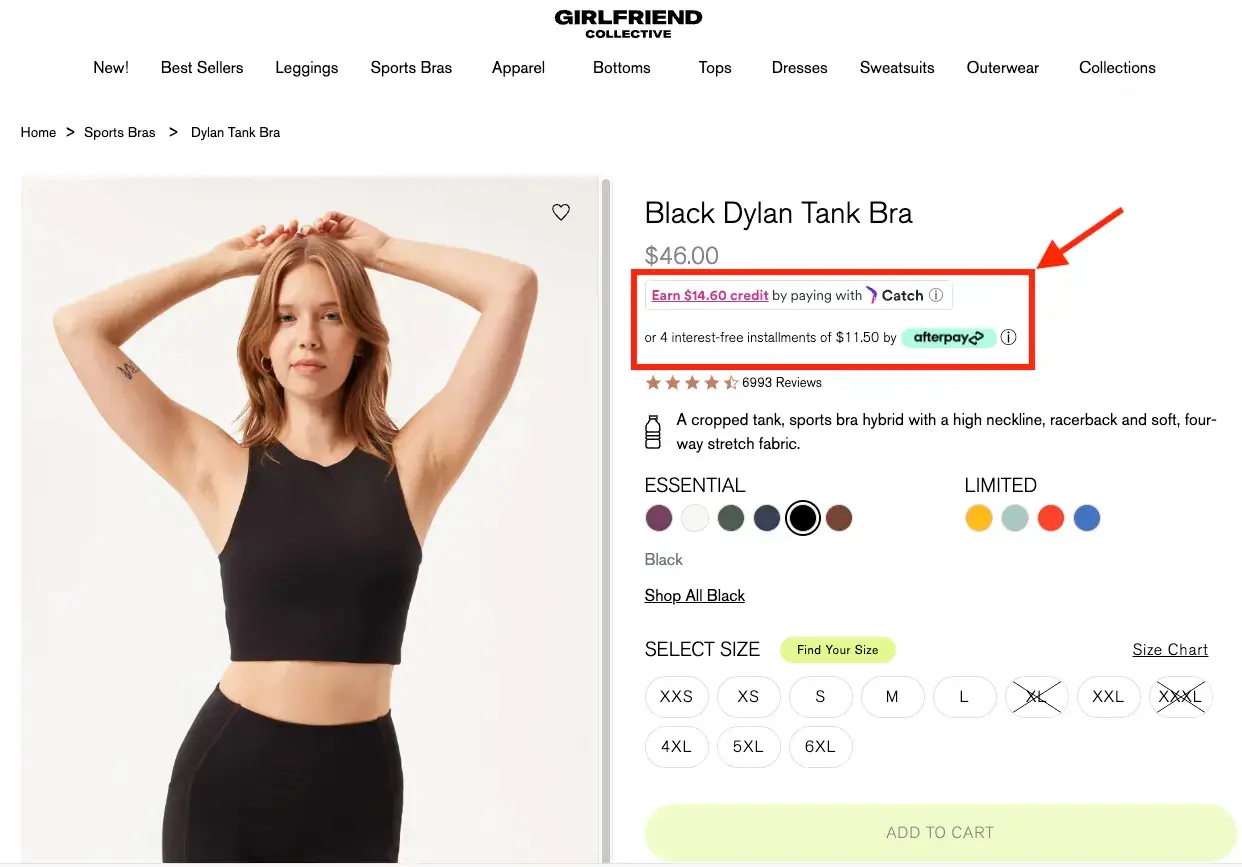
Some payment options have interest associated with them, while others do not, and some companies charge late fees or fees for missed payments.
BNPL companies can charge retailers a fee to compensate for the interest they forgo from the customer.
With BNPL, a deferred payment option, customers can buy products with little to no cash upfront and pay the remaining amount in installments.
BNPL programs have lower interest rates and less risk to the customer's credit than layaway plans.
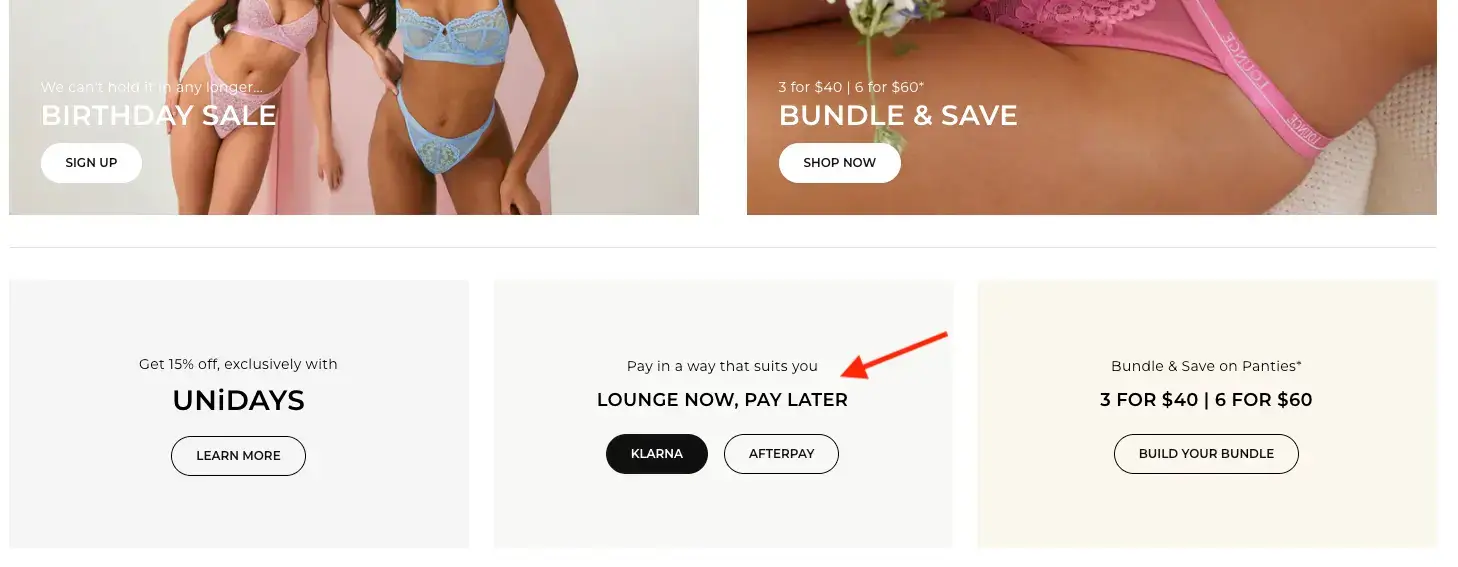
Fashion retailers can handle these short-term loans more efficiently, making online transactions and user experiences more seamless.
Indeed, according to research by RBC Capital Markets, retail conversion rates rise by 20% to 30% with a BNPL plan.
7. Omnichannel marketing
Customers demand a comprehensive, engaging experience across all online and offline channels, regardless of whether they are staying at home, excited to shop in-store, or combining both.
The phrase "multichannel commerce" refers to a retail strategy for a brand with a presence across multiple channels, such as
- Your website
- Mobile app
- Social media platform
- Brick-and-mortar store

All customer touchpoints may not offer a consistent customer experience across these channels.
Therefore, by integrating all channels to create a seamless customer experience, omnichannel commerce elevates the multichannel strategy and can increase revenue.
Brands can no longer rely only on in-person interactions with consumers, particularly in the wake of the pandemic.
During the pandemic, people have spent more time shopping online, so fashion retailers must figure out how to keep customers engaged across various channels.
Social commerce is one crucial way fashion ecommerce stores are embracing omnichannel.
Thanks to tools like:
- Instagram Shoppable Posts
- Instagram Checkout
- Facebook Shop
- Pinterest for Business
and marketplaces like Amazon, eBay, and Google, fashion retailers can reach customers across multiple social media platforms.

Omnichannel personalization enables merchants to reinforce their brand identity and values through consistent messaging.
That was the situation for UK-based home apparel retailer Lounge Underwear, a Shopify Plus merchant.
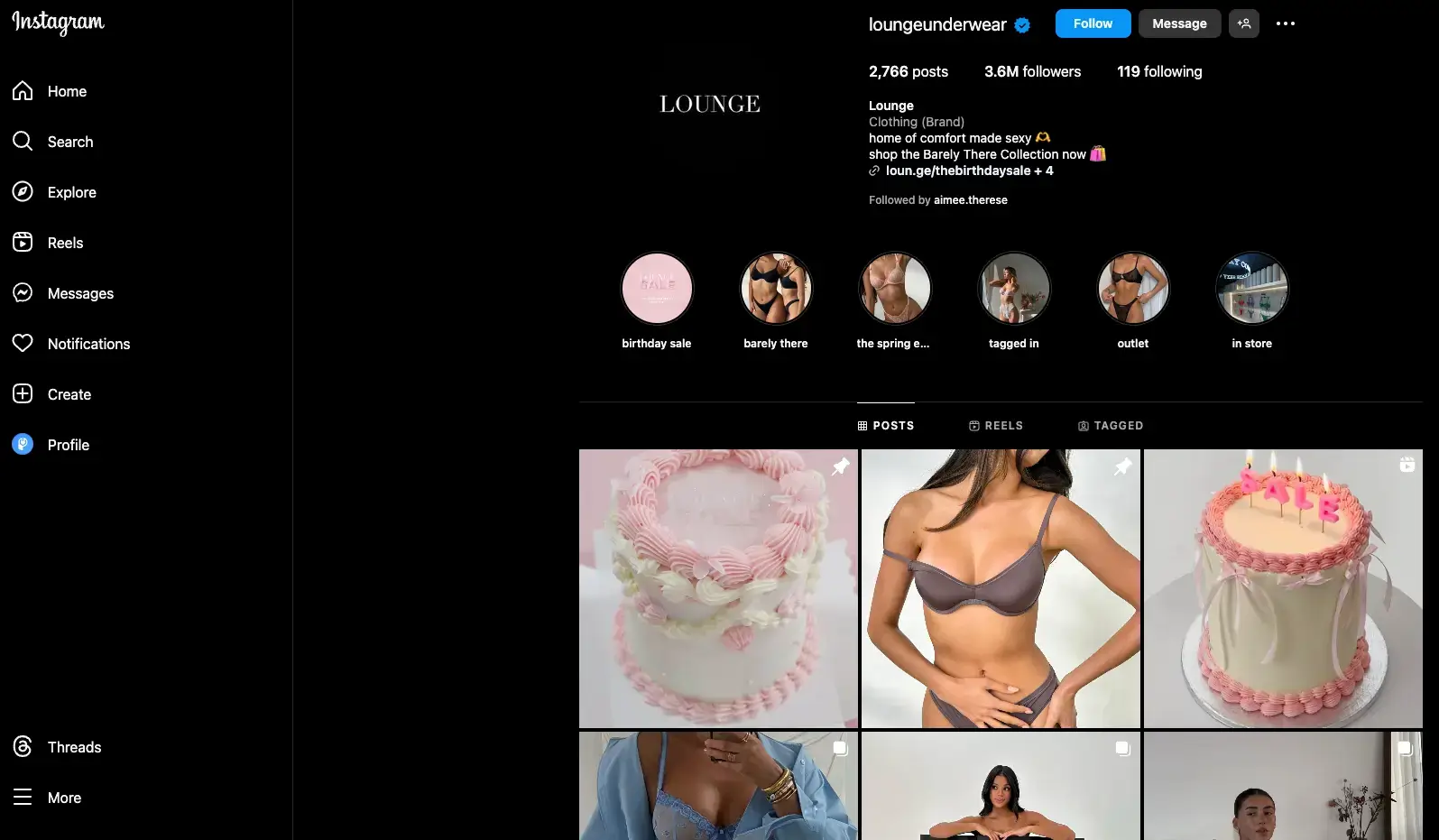
Thanks to high-quality photography, Lounge Underwear's 3.6 million Instagram followers and 366,000 Facebook fans can now click through to the brand's store.
In addition to incentives to buy and the chance to join the company's email list, they can find resources on fit and style there.
After that, devices, websites, and social media platforms target them, which are essential components in building a connected experience.
You can also use these proven tactics to engage audiences on your social media channels.

When many channels are available, customers may feel overwhelmed by their options. For this reason, many consumers research various options and evaluate items before deciding on a purchase.
Online fashion retailers must use effective SEO strategies to increase their website's visibility and ranking, as many online shoppers start their shopping journey on search engines.
How to Create an Omnichannel Marketing Campaign (in 6 steps)
- Use customer data to design a personalized shopping experience
- Make sure your messaging is uniform on all platforms.
- Engage with consumers when they are shopping in-store.
- Engage shoppers through all of your high-touch channels.
- Select the ideal technology stack for omnichannel marketing.
- Integrate social media into your website design.
3 Bonus Tips To Enhance Your Fashion Brand
1. Make use of research tools
Research can make the difference between success and failure in the ecommerce industry.
When testing products and more, you can save a ton of money and time by identifying winning products and investigating comparable stores.
Ecommerce retailers benefit from research tools such as commerce inspector, which offer competitive store insights.
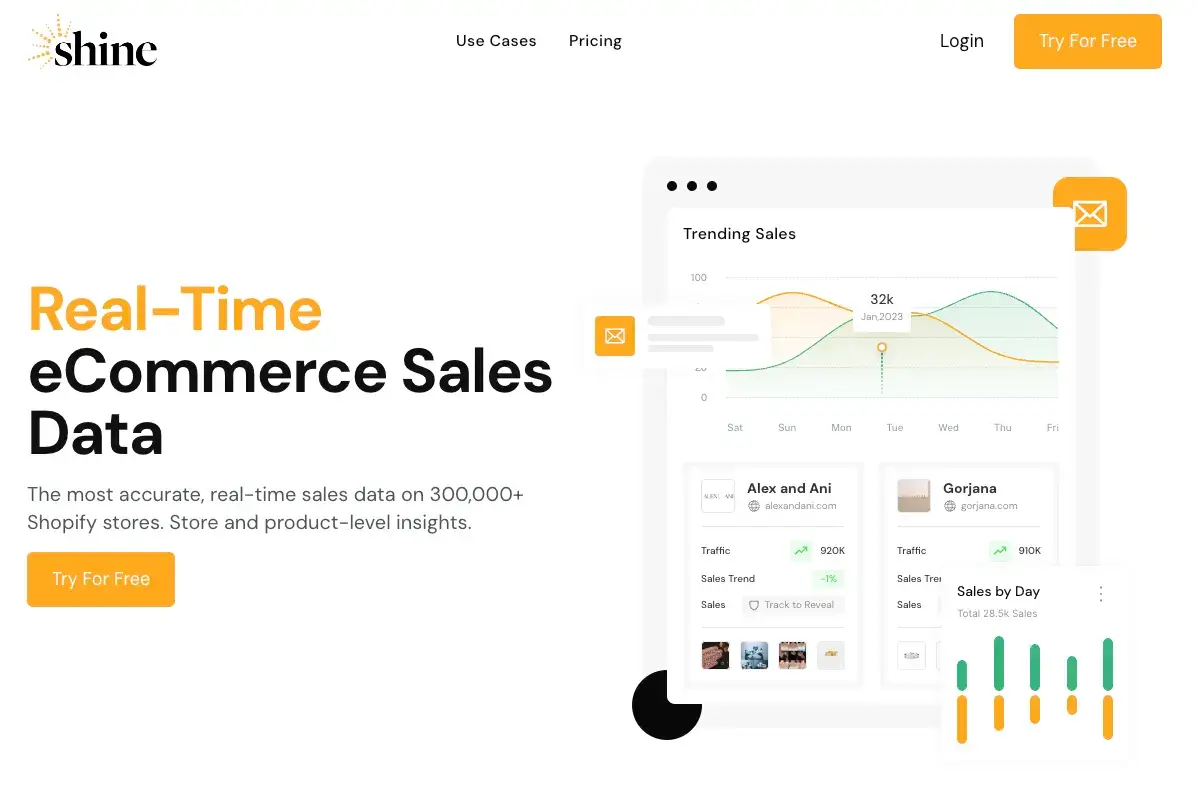
2. Never underestimate the importance of a great logo
A compelling logo is essential to a successful brand because it conveys its identity and makes an impression on consumers.
How often have you been able to identify a brand just by looking at its logo? It must be a lot.
Hatchful is a top choice for entrepreneurs who want to quickly and easily create professional logos for their Shopify store without costly software or extensive design experience.
Apparel retailers can create an excellent logo for free with various templates and easy customization options.

3. Come up with a catchy business name for your online store
Your shop name creates shoppers' first impressions of you. It also establishes how simple it is for current and new customers to identify your brand.
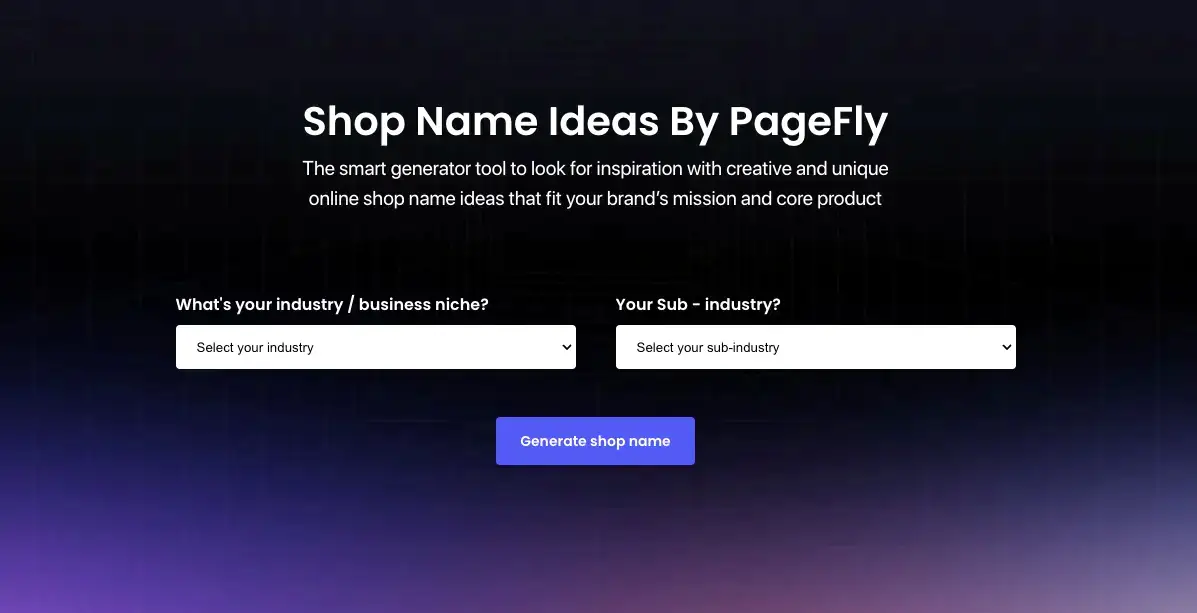
A catchy name makes your store easier to remember, search for, and recommend. In an increasingly crowded fashion ecommerce space, brand recall can be the difference between a one-time visit and a loyal customer.
When choosing a name, aim for something that is:
- Simple and easy to pronounce
- Relevant to your brand identity
- Distinct from competitors
- Flexible enough to grow with your business
It’s also important to check domain availability and social media handles early on to ensure consistent branding across platforms.
A well-chosen name supports marketing, SEO, and long-term brand recognition—making it a foundational step you shouldn’t rush.
Conclusion
The fashion ecommerce industry continues to evolve rapidly, driven by changing consumer expectations, technological innovation, and a growing demand for transparency and personalization.
From sustainability and ethical manufacturing to AI-powered personalization, flexible payment options, and omnichannel marketing, today’s most successful fashion brands are those that adapt strategically rather than reactively.
What unites all of these trends is a shared focus on the customer experience—making shopping more convenient, inclusive, engaging, and trustworthy.
Brands that invest in long-term value, rather than short-term gains, are better positioned to stand out in an increasingly competitive market.
By understanding and applying these fashion ecommerce trends, you can build a stronger brand, create deeper customer relationships, and set your store up for sustainable growth well beyond 2024.


